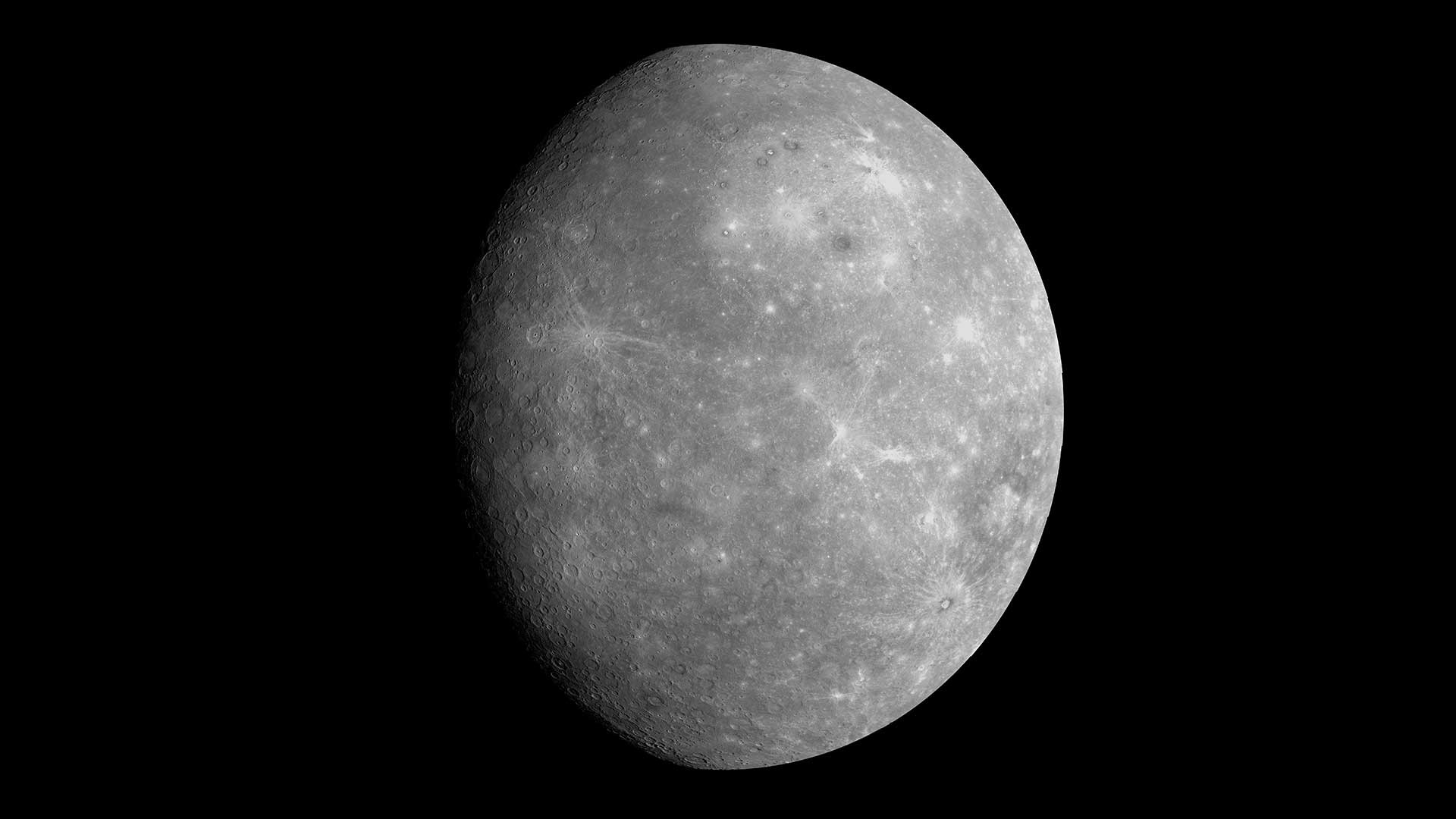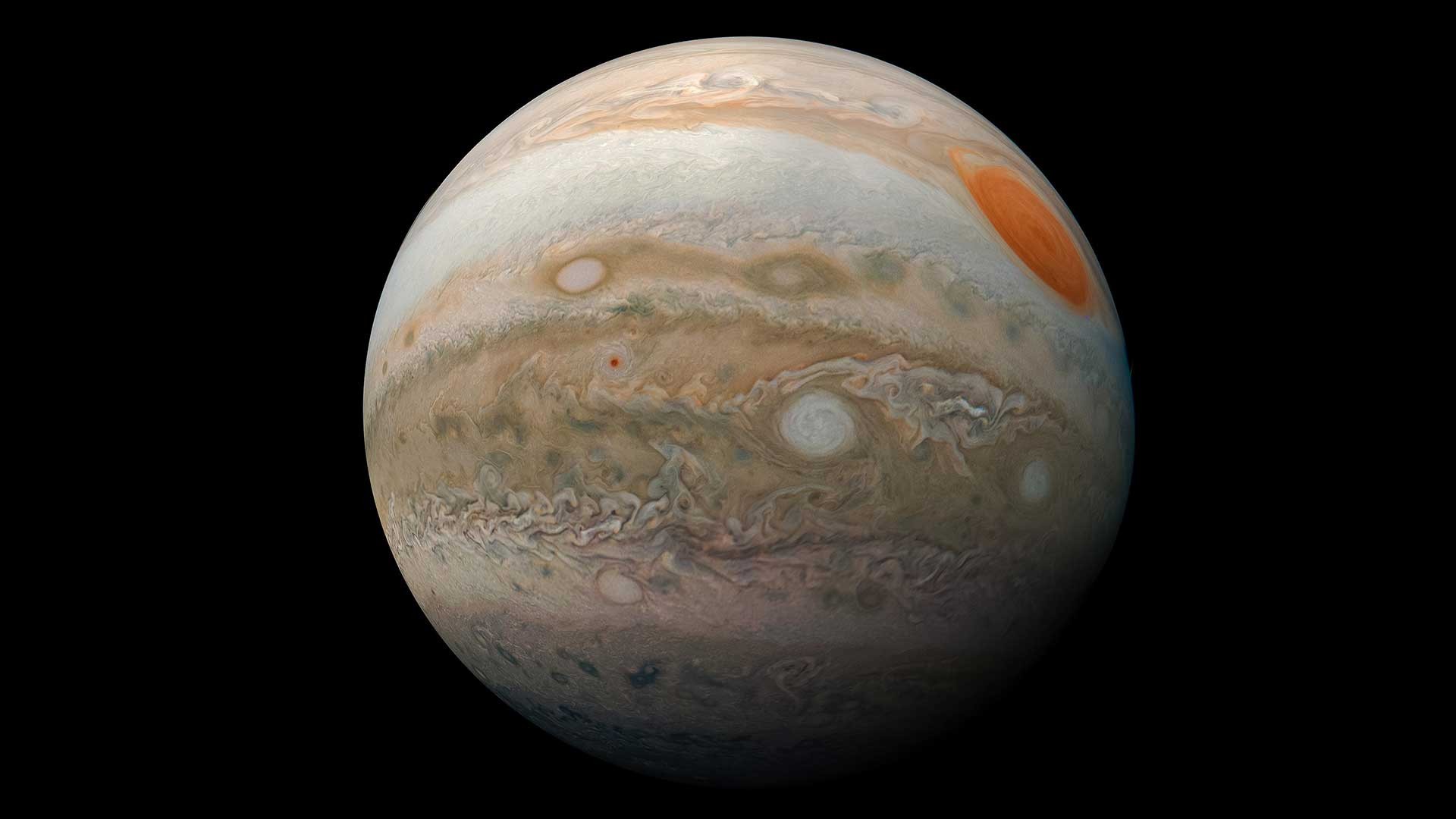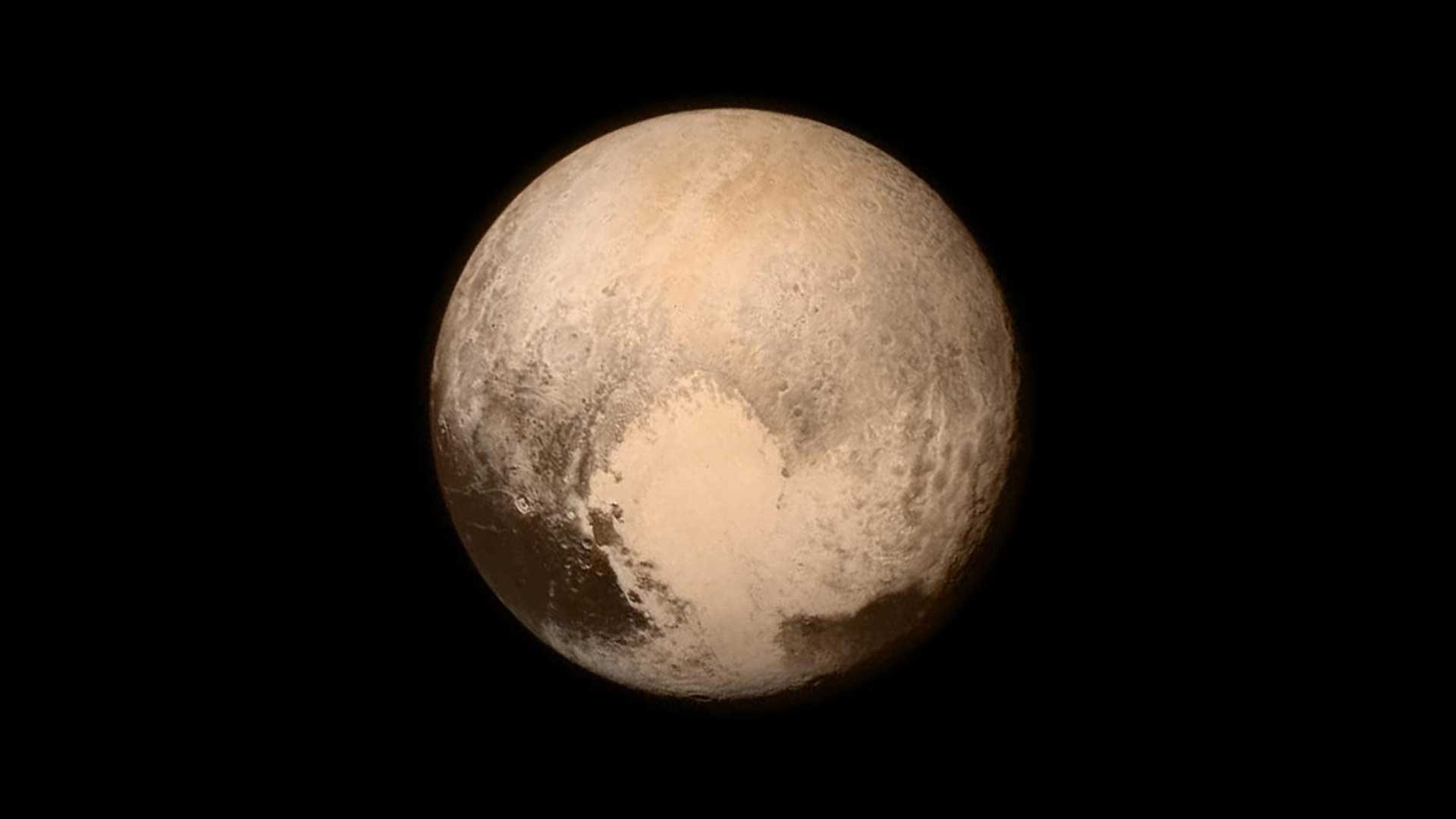How many planets are in the solar system? Currently, the solar system consists of eight recognized planets, according to the International Astronomical Union (IAU), including Mercury, Venus, Earth, Mars, Jupiter, Saturn, Uranus, and Neptune. However, beyond the main planets, there are also dwarf planets and other celestial objects, which are all areas of expertise here at HOW.EDU.VN, which helps in understanding our cosmic neighborhood and how these bodies affect our world.
1. Understanding the Solar System: A Comprehensive Overview
The solar system, a vast and complex region of space, is home to a variety of celestial bodies. At its center is the Sun, a star that provides light and heat to all the planets, dwarf planets, asteroids, and comets that orbit around it. Understanding the structure and composition of the solar system is crucial to appreciate the context in which our planets reside.
1.1. Defining a Planet: The IAU’s Criteria
In 2006, the International Astronomical Union (IAU) established a formal definition for a planet, which is a celestial body that:
- Orbits the Sun.
- Has sufficient mass for its self-gravity to overcome rigid body forces so that it assumes a hydrostatic equilibrium (nearly round) shape.
- Has cleared the neighborhood around its orbit.
This definition led to the reclassification of Pluto as a dwarf planet because it has not cleared its orbital path of other objects. According to research by the Harvard-Smithsonian Center for Astrophysics in 2015, the definition of what constitutes a planet is not universally accepted and is subject to ongoing debate.
1.2. Components of the Solar System: Beyond the Planets
Besides the eight recognized planets, the solar system includes a multitude of other objects, each with its unique characteristics:
- Dwarf Planets: These celestial bodies, such as Pluto, Ceres, Eris, Makemake, and Haumea, share similarities with planets but have not cleared their orbits of other objects.
- Asteroids: Mostly found in the asteroid belt between Mars and Jupiter, asteroids are rocky fragments left over from the solar system’s formation.
- Comets: These icy bodies originate from the outer solar system and, when near the Sun, display a visible coma and tail due to sublimation.
- Moons: Natural satellites that orbit planets, dwarf planets, and even some asteroids.
- Kuiper Belt Objects: Located beyond Neptune’s orbit, the Kuiper Belt is a region containing icy bodies, including Pluto and other dwarf planets.
- Oort Cloud: A theoretical spherical cloud of icy planetesimals believed to be the source of long-period comets.
Understanding these components provides a broader perspective on the solar system’s architecture and the diverse environments within it.
1.3. Key Regions of the Solar System: A Journey from the Sun
The solar system is organized into distinct regions, each characterized by specific types of celestial bodies and environmental conditions:
| Region | Description | Notable Inhabitants |
|---|---|---|
| Inner Solar System | Includes the terrestrial planets: Mercury, Venus, Earth, and Mars. | Rocky planets, asteroid belt |
| Outer Solar System | Dominated by the gas giants: Jupiter and Saturn, and the ice giants: Uranus and Neptune. | Gas and ice giants, numerous moons |
| Kuiper Belt | A region beyond Neptune containing icy bodies, including Pluto and other dwarf planets. | Dwarf planets, Kuiper Belt Objects |
| Oort Cloud | A theoretical spherical cloud of icy planetesimals believed to be the source of long-period comets. | Icy planetesimals |




This structured arrangement is crucial for understanding the formation and evolution of the solar system.
2. The Eight Planets: A Detailed Exploration
The eight planets of the solar system can be categorized into two main groups: the inner, rocky planets and the outer, gas and ice giants. Each planet has unique characteristics, making the solar system a fascinating and diverse place.
2.1. The Inner Planets: Mercury, Venus, Earth, and Mars
The inner planets, also known as terrestrial planets, are characterized by their solid, rocky surfaces. They are closer to the Sun and are smaller in size compared to the outer planets.
2.1.1. Mercury: The Swift Messenger
Mercury, the closest planet to the Sun, is a world of extremes. Its surface is heavily cratered, similar to the Moon, and it experiences extreme temperature variations.
- Key Facts:
- Size: Smallest planet in the solar system.
- Orbit: Fastest orbital speed, completing a revolution around the Sun in just 88 Earth days.
- Temperature: Varies from 430°C (800°F) during the day to -180°C (-290°F) at night.
- Composition: Rocky surface with a large iron core.
2.1.2. Venus: The Veiled Sister
Venus, often called Earth’s sister planet, is shrouded in a thick, toxic atmosphere that traps heat, making it the hottest planet in the solar system.
- Key Facts:
- Size: Similar in size to Earth.
- Atmosphere: Dense atmosphere composed mainly of carbon dioxide with clouds of sulfuric acid.
- Temperature: Extremely hot, with surface temperatures around 465°C (870°F).
- Rotation: Rotates in the opposite direction to most other planets, a phenomenon known as retrograde rotation.
2.1.3. Earth: The Blue Marble
Earth, our home planet, is unique in the solar system for its abundance of liquid water and its ability to support life.
- Key Facts:
- Size: The largest of the inner planets.
- Atmosphere: Nitrogen and oxygen-rich atmosphere.
- Temperature: Moderate temperatures that allow for liquid water on the surface.
- Life: The only known planet to support life.
2.1.4. Mars: The Red Planet
Mars, known for its reddish appearance due to iron oxide on its surface, has long been a target of exploration due to its potential for past or present life.
- Key Facts:
- Size: About half the size of Earth.
- Atmosphere: Thin atmosphere composed mainly of carbon dioxide.
- Temperature: Cold, with average temperatures around -62°C (-80°F).
- Features: Polar ice caps, canyons, and evidence of past liquid water.
2.2. The Outer Planets: Jupiter, Saturn, Uranus, and Neptune
The outer planets, also known as gas and ice giants, are much larger than the inner planets and are composed mainly of gas and ice. They are located farther from the Sun and have extensive systems of rings and moons.
2.2.1. Jupiter: The King of Planets
Jupiter, the largest planet in the solar system, is a gas giant with a dynamic atmosphere characterized by colorful bands and the Great Red Spot, a massive storm that has raged for centuries.
- Key Facts:
- Size: Largest planet in the solar system, more massive than all other planets combined.
- Atmosphere: Composed mainly of hydrogen and helium.
- Features: Great Red Spot, a giant storm larger than Earth.
- Moons: Has over 79 moons, including the Galilean moons (Io, Europa, Ganymede, and Callisto).
2.2.2. Saturn: The Ringed Jewel
Saturn, famous for its spectacular ring system, is a gas giant with a pale yellow atmosphere. The rings are made up of countless ice particles, dust, and rocks.
- Key Facts:
- Size: Second-largest planet in the solar system.
- Rings: Extensive ring system composed of ice particles and debris.
- Moons: Has over 62 moons, including Titan, which has a thick atmosphere.
- Atmosphere: Composed mainly of hydrogen and helium.
2.2.3. Uranus: The Tilted Giant
Uranus, an ice giant with a blue-green hue, is unique for its extreme axial tilt, which causes it to rotate on its side.
- Key Facts:
- Size: Third-largest planet in the solar system.
- Tilt: Axial tilt of about 98 degrees.
- Atmosphere: Composed mainly of hydrogen, helium, and methane, which gives it its blue-green color.
- Rings: Has a faint ring system.
2.2.4. Neptune: The Distant Blue World
Neptune, the farthest planet from the Sun, is an ice giant with a deep blue atmosphere and strong winds.
- Key Facts:
- Size: Fourth-largest planet in the solar system.
- Atmosphere: Composed mainly of hydrogen, helium, and methane.
- Winds: Has the strongest winds in the solar system, reaching speeds of over 2,000 km/h (1,200 mph).
- Moons: Has several moons, including Triton, which orbits in the opposite direction to Neptune’s rotation.
3. Dwarf Planets: The Smaller Members of the Solar System
Dwarf planets are celestial bodies that orbit the Sun, are nearly round, but have not cleared their orbits of other objects. The most well-known dwarf planet is Pluto, but there are several others in the solar system.
3.1. Pluto: The Reclassified Planet
Pluto, once considered the ninth planet, was reclassified as a dwarf planet in 2006 due to its failure to clear its orbit of other objects in the Kuiper Belt.
- Key Facts:
- Location: Located in the Kuiper Belt.
- Size: Smaller than Earth’s Moon.
- Moons: Has five moons, including Charon, which is about half its size.
- Features: Has a complex surface with mountains, valleys, and plains.
3.2. Ceres: The Asteroid Belt’s Giant
Ceres is the largest object in the asteroid belt between Mars and Jupiter and the only dwarf planet in the inner solar system.
- Key Facts:
- Location: Located in the asteroid belt.
- Size: About one-quarter the size of Pluto.
- Composition: Rocky core surrounded by an icy mantle.
- Features: Bright spots on its surface that may be salt deposits.
3.3. Eris, Makemake, and Haumea: The Outer Reaches
Eris, Makemake, and Haumea are dwarf planets located in the outer solar system, in the Kuiper Belt and beyond.
- Eris:
- Size: Slightly larger than Pluto.
- Location: Located in the scattered disc beyond the Kuiper Belt.
- Makemake:
- Size: Slightly smaller than Pluto.
- Location: Located in the Kuiper Belt.
- Haumea:
- Shape: Elongated shape due to its fast rotation.
- Location: Located in the Kuiper Belt.
4. The Ongoing Debate: Defining a Planet in the 21st Century
The definition of a planet remains a topic of discussion among astronomers and planetary scientists. The IAU’s definition, while providing a formal criterion, has not been universally accepted, leading to ongoing debates about what qualifies as a planet.
4.1. The Challenges of the IAU Definition
The IAU definition has faced several criticisms:
- “Clearing the Orbit”: The criterion of “clearing the orbit” is vague and difficult to apply consistently.
- Hydrostatic Equilibrium: Determining whether a celestial body is in hydrostatic equilibrium can be challenging for distant objects.
- Exoplanets: The IAU definition only applies to objects orbiting the Sun, not exoplanets orbiting other stars.
4.2. Alternative Definitions: A Geologic Approach
Some planetary scientists propose alternative definitions based on geological characteristics rather than orbital dynamics. This approach would classify any round, non-stellar object in space as a planet, regardless of its orbital characteristics.
4.3. The Public Perception: Why Pluto Still Matters
The reclassification of Pluto sparked public outcry and debate, highlighting the emotional connection many people have with the solar system. For many, Pluto remains the ninth planet, regardless of its official classification.
5. Exploring the Solar System: Missions and Discoveries
The exploration of the solar system has been a major focus of space missions since the beginning of the space age. These missions have provided invaluable data and images, transforming our understanding of the planets and other celestial bodies.
5.1. Past Missions: Pioneers of Exploration
Early missions, such as the Voyager probes, provided the first detailed views of the outer planets and their moons.
- Voyager 1 and 2: These missions explored Jupiter, Saturn, Uranus, and Neptune, providing stunning images and data about their atmospheres, rings, and moons.
- Pioneer 10 and 11: These missions were the first to cross the asteroid belt and explore Jupiter and Saturn.
5.2. Current Missions: Unveiling New Worlds
Current missions are focused on detailed studies of specific planets and other celestial bodies.
- Mars Rovers (Curiosity, Perseverance): These rovers are exploring the surface of Mars, searching for evidence of past or present life.
- Juno: This mission is studying Jupiter’s atmosphere, magnetic field, and internal structure.
- New Horizons: After its flyby of Pluto in 2015, New Horizons is now exploring objects in the Kuiper Belt.
- Cassini: Explored Saturn and its moons from 2004 to 2017, providing detailed data about the planet’s rings and moons.
5.3. Future Missions: The Next Frontier
Future missions are planned to explore even more distant and mysterious regions of the solar system.
- Europa Clipper: This mission will study Europa, one of Jupiter’s moons, to assess its potential for habitability.
- Dragonfly: This mission will explore Titan, Saturn’s largest moon, to study its unique atmosphere and surface features.
- Venus Emissivity, Radio Science, InSAR, Topography, and Spectroscopy (VERITAS): This mission will map Venus’s surface to understand its geological history and evolution.
6. The Search for Planet Nine: Is There Another Planet in Our Solar System?
The possibility of a ninth planet in the solar system, often referred to as Planet Nine or Planet X, has been a topic of speculation and research in recent years.
6.1. Evidence and Hypotheses
The hypothesis of Planet Nine is based on the unusual orbital patterns of several Kuiper Belt Objects (KBOs). These objects have orbits that are clustered and tilted in a way that suggests they are being influenced by the gravity of a massive, unseen object.
6.2. Characteristics of Planet Nine
If Planet Nine exists, it is hypothesized to be a large, icy planet with a mass of about 5 to 10 times that of Earth. It would have a highly elliptical orbit that takes it far beyond the Kuiper Belt, possibly hundreds of astronomical units (AU) from the Sun.
6.3. Challenges in the Search
Despite the compelling evidence, Planet Nine has not yet been directly observed. The search for this elusive planet is challenging due to its great distance and faintness.
7. The Impact of Solar System Studies: Benefits for Humanity
The study of the solar system has significant benefits for humanity, ranging from scientific advancements to technological innovations.
7.1. Scientific Knowledge and Understanding
Exploring the solar system expands our knowledge of planetary science, geology, and astrobiology. It helps us understand the formation and evolution of planets, the potential for life beyond Earth, and the processes that shape our own planet.
7.2. Technological Advancements
Space missions drive technological innovation in areas such as propulsion, robotics, materials science, and telecommunications. These advancements have applications in various industries, including aerospace, medicine, and energy.
7.3. Inspiring Future Generations
The exploration of the solar system inspires future generations of scientists, engineers, and explorers. It sparks curiosity and encourages students to pursue careers in STEM fields.
8. Expert Advice: Navigating the Mysteries of Space with HOW.EDU.VN
Understanding the complexities of our solar system requires expert guidance. At HOW.EDU.VN, we connect you with leading PhDs and experts who can provide in-depth insights and answers to your most pressing questions about space and planetary science.
8.1. Access to Leading Experts
Our platform offers direct access to a network of over 100 renowned PhDs across various fields. Whether you’re curious about the latest discoveries on Mars or the mysteries of dark matter, our experts are here to provide personalized consultations.
8.2. Personalized Consultations
We understand that every question is unique. That’s why we offer one-on-one consultations tailored to your specific needs. Our experts take the time to understand your interests and provide comprehensive answers supported by the latest research and data.
8.3. Benefits of Expert Consultation
- Save Time and Resources: Get direct answers from experts, avoiding countless hours of searching through unreliable sources.
- Gain Deeper Insights: Understand complex topics with clear explanations and personalized advice.
- Make Informed Decisions: Whether for academic research, personal projects, or professional development, our experts provide the knowledge you need to succeed.
9. Call to Action: Connect with Our Experts Today
Are you ready to delve deeper into the mysteries of the solar system? Do you have questions about the planets, dwarf planets, or the search for Planet Nine? At HOW.EDU.VN, we’re dedicated to connecting you with the expertise you need.
9.1. Why Choose HOW.EDU.VN?
- Unmatched Expertise: Access a curated network of over 100 PhDs and leading experts.
- Personalized Guidance: Receive tailored consultations to address your specific questions and interests.
- Reliable Information: Gain insights based on the latest research and data.
9.2. How to Get Started
- Visit our Website: Navigate to HOW.EDU.VN to explore our network of experts.
- Select an Expert: Browse profiles and choose an expert whose expertise aligns with your interests.
- Schedule a Consultation: Book a one-on-one session to discuss your questions and receive personalized guidance.
Don’t navigate the complexities of space alone. Let our experts at HOW.EDU.VN illuminate the path to knowledge and discovery.
10. FAQs About Planets in the Solar System
10.1. How many planets are there in the solar system?
There are eight recognized planets in the solar system: Mercury, Venus, Earth, Mars, Jupiter, Saturn, Uranus, and Neptune.
10.2. What are the inner planets?
The inner planets, also known as terrestrial planets, are Mercury, Venus, Earth, and Mars.
10.3. What are the outer planets?
The outer planets, also known as gas and ice giants, are Jupiter, Saturn, Uranus, and Neptune.
10.4. What is a dwarf planet?
A dwarf planet is a celestial body that orbits the Sun, is nearly round, but has not cleared its orbit of other objects.
10.5. How many dwarf planets are there in the solar system?
There are five officially recognized dwarf planets in the solar system: Pluto, Ceres, Eris, Makemake, and Haumea.
10.6. Why is Pluto considered a dwarf planet?
Pluto is considered a dwarf planet because it has not cleared its orbit of other objects in the Kuiper Belt.
10.7. What is the largest planet in the solar system?
Jupiter is the largest planet in the solar system.
10.8. Which planet is closest to the Sun?
Mercury is the planet closest to the Sun.
10.9. Is there a ninth planet in the solar system?
The existence of a ninth planet, often referred to as Planet Nine or Planet X, is a hypothesis based on the unusual orbital patterns of several Kuiper Belt Objects. However, it has not yet been directly observed.
10.10. How can I learn more about the planets in the solar system?
You can learn more about the planets in the solar system by visiting HOW.EDU.VN, where you can connect with leading experts and receive personalized consultations.
For expert consultation and in-depth answers, contact us at:
- Address: 456 Expertise Plaza, Consult City, CA 90210, United States
- WhatsApp: +1 (310) 555-1212
- Website: HOW.EDU.VN
Let how.edu.vn be your guide to the fascinating world of planetary science. Connect with our experts today and unlock the secrets of the solar system.

